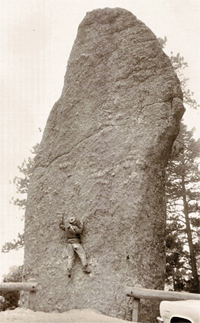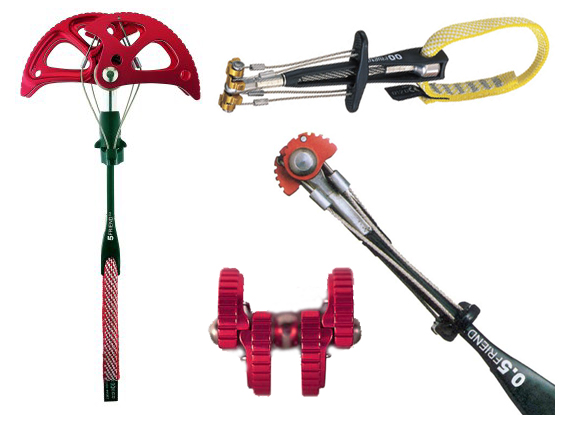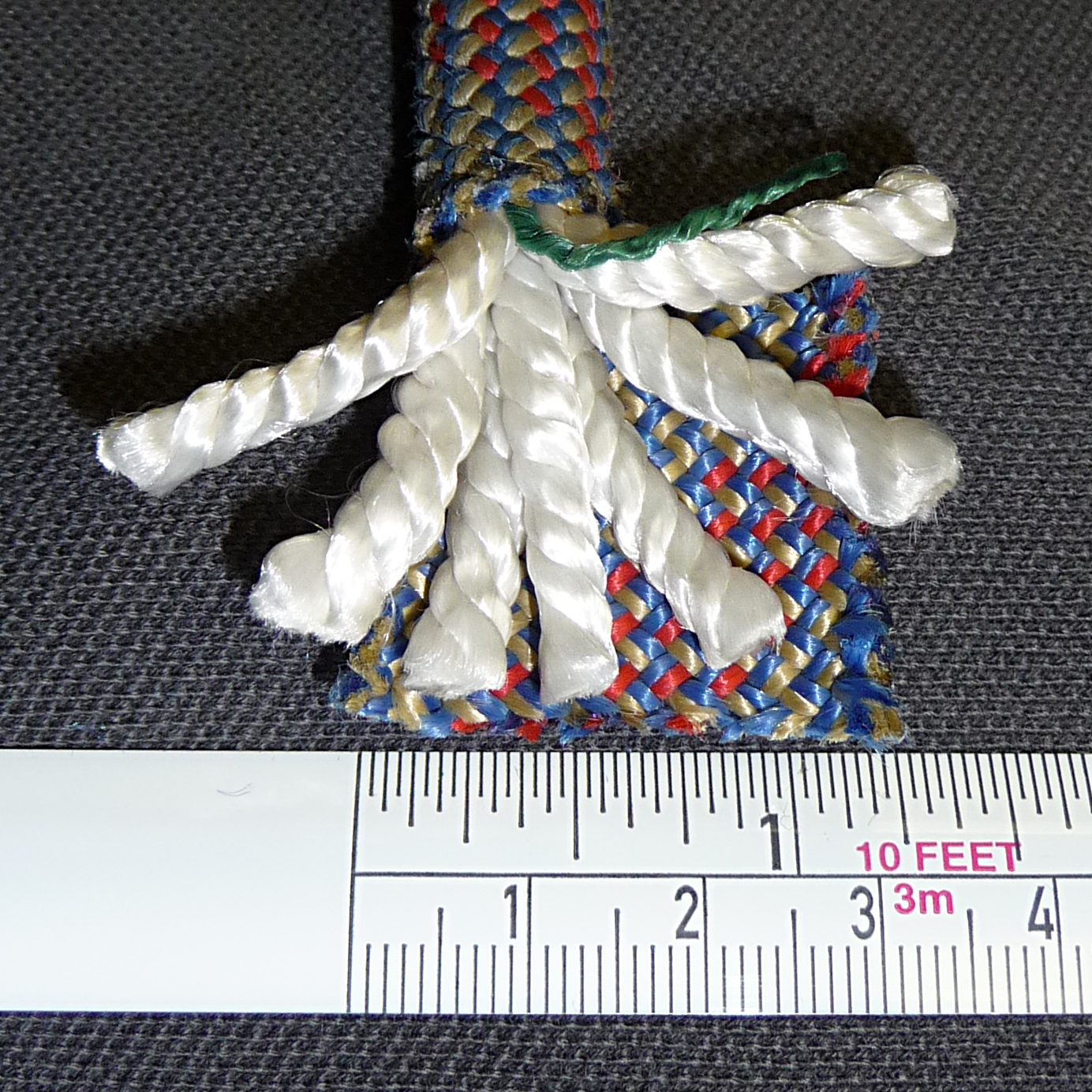|
Lead Climbing
Lead climbing is a climbing style, predominantly used in rock climbing. In a roped party one climber has to take the lead while the other climbers follow. The ''lead climber'' wears a harness attached to a climbing rope, which in turn is connected to the other climbers below the lead climber. While ascending the route, the lead climber periodically connects the rope to protection equipment for safety in the event of a fall. This protection can consist of permanent bolts, to which the climber clips quickdraws, or removable protection such as nuts and cams. One of the climbers below the lead climber acts as a belayer. The belayer gives out rope while the lead climber ascends and also stops the rope when the lead climber falls or wants to rest. A different style than lead climbing is top-roping. Here the rope is preattached to an anchor at the top of a climbing route before the climber starts their ascent. Lead climbing as a discipline of sport climbing debuted at the 2020 Summ ... [...More Info...] [...Related Items...] OR: [Wikipedia] [Google] [Baidu] |
2018 IFSC Climbing World Championships
The 2018 IFSC Climbing World Championships, the 15th edition, were held in Innsbruck, Austria from 6 to 16 September 2018. The championships consisted of lead, speed, bouldering, paraclimbing, and combined events. Medal winners overview Lead The lead competition was the first event held at the 2018 World Championships. The women's qualification took place on the opening day, 6 September, at the Kletterzentrum, and the men's was held the following day at the same location. Women's semi-final and final were held on 8 September and the respective men's competitions the next day both at the Olympiaworld. Women 101 athletes attended the women's lead competition. In the final penultimate climber Jessica Pilz was the first to top the route. Janja Garnbret came out as the last climber and topped the route as well. As both climbers had the same first tiebreaker by virtue of having topped the semi-final route the ranking was decided by their time on the final route, which Pilz ... [...More Info...] [...Related Items...] OR: [Wikipedia] [Google] [Baidu] |
Traditional Climbing
Traditional climbing (or Trad climbing) is a style of rock climbing in which the climber places all the necessary protection gear required to arrest any falls as they are climbing, and then removes it when the pitch is complete (often done by the second/follow-on climber). Traditional bolted aid climbing means the bolts were placed while on lead and/or with hand drills (the bolts tend to be much farther apart than for sport climbs). Traditional climbing carries a higher level of risk than bolted sport climbing, as the climber may not have placed the safety equipment correctly while trying to ascend the route; for some of the world's hardest climbs (e.g. '' Realization/Biographie''), there may not be sufficient cracks or features in the rock that can accept protection gear, and the climb can only be safely attempted by bolting as a sport climb. Overview Characterizing climbing as ''traditional'' distinguishes it from bolted climbing—either trad bolted or sport climbing ... [...More Info...] [...Related Items...] OR: [Wikipedia] [Google] [Baidu] |
Bouldering
Bouldering is a form of free climbing that is performed on small rock formations or artificial rock walls without the use of ropes or harnesses. While bouldering can be done without any equipment, most climbers use climbing shoes to help secure footholds, chalk to keep their hands dry and to provide a firmer grip, and bouldering mats to prevent injuries from falls. Unlike free solo climbing, which is also performed without ropes, bouldering problems (the sequence of moves that a climber performs to complete the climb) are usually less than tall. Traverses, which are a form of boulder problem, require the climber to climb horizontally from one end to another. Artificial climbing walls allow boulderers to climb indoors in areas without natural boulders. In addition, bouldering competitions take place in both indoor and outdoor settings. The sport was originally a method of training for roped climbs and mountaineering, so climbers could practice specific moves at a safe dist ... [...More Info...] [...Related Items...] OR: [Wikipedia] [Google] [Baidu] |
Competition Climbing
A climbing competition (or comp) is usually held indoors on purpose built climbing walls. There are three main types of climbing competition: lead, speed, and bouldering. In lead climbing, the competitors start at the bottom of a route and must climb it within a certain time frame in a single attempt, making sure to clip the rope into pre-placed quickdraws along the route. Bouldering competitions consist of climbing short problems without rope, with the emphasis on number of problems completed and the attempts necessary to do so. Speed climbing can either be an individual or team event, with the person or team that can climb a standardized route the fastest winning. The International Federation of Sport Climbing (IFSC) organizes some of the most important international sport climbing competitions, including the Climbing World Championships and the Climbing World Cup. Sport climbing was featured at the Summer Olympics for the first time in 2020. Disciplines Lead climbing In ... [...More Info...] [...Related Items...] OR: [Wikipedia] [Google] [Baidu] |
Climbing World Championships 2018 Lead Final Kotake (BT0A2343)
Climbing is the activity of using one's hands, feet, or any other part of the body to ascend a steep topographical object that can range from the world's tallest mountains (e.g. the eight thousanders), to small boulders. Climbing is done for locomotion, sporting recreation, and for competition, and is also done in trades that rely on ascension; such as emergency rescue and military operations. Climbing is done indoors and outdoors and on natural (e.g. rock and ice) and artificial surfaces. Professional mountain guides or rock climbing guides (e.g. the UIAGM), were a significant element in developing the popularity of the sport in the natural environment, and remain so today. Since the 1980s, the development of competition climbing and the availability of artificial climbing walls have dramatically increased the popularity of rock climbing as a sport and led to the emergence of professional rock climbers, such as Wolfgang Güllich, Chris Sharma, Lynn Hill and Catherine D ... [...More Info...] [...Related Items...] OR: [Wikipedia] [Google] [Baidu] |
Multi-pitch Climbing
Multi-pitch climbing is the ascent of climbing routes with one or more stops at a belay station. Each section of a climb between stops at belay stations is called a pitch. The leader ascends the pitch, placing gear and stopping to anchor themselves to the belay station. The general purpose of these stops is to allow the second climber to ascend to the point of the lead climber while collecting the protective gear from the route in the course of the lead climber's ascent. At the belay station, the protective gear is collected, possibly exchanged to a new leader, and the leader of the next pitch ascends the route. Reasons for invoking stops Climbers invoke stops either by choice, convention or necessity. Examples include: *The rope is too short to do the entire route in one pitch. *The leader has run out of protective gear. *There is a convenient protectable ledge, or fixed bolts placed by previous climbers, at the location for a belay station. *The leader chooses to rest or excha ... [...More Info...] [...Related Items...] OR: [Wikipedia] [Google] [Baidu] |
Big Wall Climbing
Big wall climbing is a type of rock climbing where a climber ascends a long multi-pitch route, normally requiring more than a single day to complete the climb. Big wall routes require the climbing team to live on the route often using portaledges and hauling equipment. It is practiced on tall or more vertical faces with few ledges and small cracks. History In the early 20th century, climbers were scaling big rock faces in the Dolomites and the European Alps employing free- and aid-climbing tactics to create bold ascents. Yet, the sheer walls were waiting to be climbed by future generations with better tools and methods. In addition, many nations in the early 1900s had specialized army units that had developed wall climbing skills for gaining surprise entry into enemy fortifications by wall climbing. In the early 1900s the Filipino Scouts, a US Army unit composed of Filipino enlisted and American officers, demonstrated their specialized skills by climbing the steep walls of ... [...More Info...] [...Related Items...] OR: [Wikipedia] [Google] [Baidu] |
Fall Factor
In lead climbing using a dynamic rope, the fall factor (''f'') is the ratio of the height (''h'') a climber falls before the climber's rope begins to stretch and the rope length (''L'') available to absorb the energy of the fall, :f = \frac. It is the main factor determining the violence of the forces acting on the climber and the gear. As a numerical example, consider a fall of 20 feet that occurs with 10 feet of rope out (i.e., the climber has placed no protection and falls from 10 feet above the belayer to 10 feet below—a factor 2 fall). This fall produces far more force on the climber and the gear than if a similar 20 foot fall had occurred 100 feet above the belayer. In the latter case (a fall factor of 0.2), the rope acts like a bigger, longer rubber band, and its stretch more effectively cushions the fall. Sizes of fall factors The smallest possible fall factor is zero. This occurs, for example, in top-rope a fall onto a rope with no slack. The rope stretches, so al ... [...More Info...] [...Related Items...] OR: [Wikipedia] [Google] [Baidu] |
Spring-loaded Camming Device
A spring-loaded camming device (also SLCD, cam or friend) is a piece of rock climbing or mountaineering protection equipment. It consists of two, three, or four cams mounted on a common axle or two adjacent axles, so that pulling on the axle forces the cams to spread farther apart. This is then attached to a sling and carabiner at the end of the stem. The SLCD is used by pulling on the "trigger" (a small handle) so the cams retract together, then inserting it into a crack or pocket in the rock and releasing the trigger to allow the cams to expand. A pull on the rope, such as that generated by a climber falling, will cause a properly placed SLCD to convert the pulling force along the stem of the unit into outwards pressure on the rock, generating massive amounts of friction and preventing the removal of the unit from the rock. Because of the large forces which are exerted on the rock when an SLCD is fallen on, it is very important that SLCDs are only placed in solid, strong roc ... [...More Info...] [...Related Items...] OR: [Wikipedia] [Google] [Baidu] |
New River Gorge - Supercrack - 1
New is an adjective referring to something recently made, discovered, or created. New or NEW may refer to: Music * New, singer of K-pop group The Boyz Albums and EPs * ''New'' (album), by Paul McCartney, 2013 * ''New'' (EP), by Regurgitator, 1995 Songs * "New" (Daya song), 2017 * "New" (Paul McCartney song), 2013 * "New" (No Doubt song), 1999 *"new", by Loona from '' Yves'', 2017 *"The New", by Interpol from '' Turn On the Bright Lights'', 2002 Acronyms * Net economic welfare, a proposed macroeconomic indicator * Net explosive weight, also known as net explosive quantity * Network of enlightened Women, a conservative university women's organization * Next Entertainment World, a South Korean film distribution company Identification codes * Nepal Bhasa language ISO 639 language code * New Century Financial Corporation (NYSE stock abbreviation) * Northeast Wrestling, a professional wrestling promotion in the northeastern United States Transport * New Orleans Lakefront Ai ... [...More Info...] [...Related Items...] OR: [Wikipedia] [Google] [Baidu] |
Belay Device
A belay device is a mechanical piece of climbing equipment used to control a rope during belaying. It is designed to improve belay safety for the climber by allowing the belayer to manage their duties with minimal physical effort. With the right belay device, a small, weak climber can easily arrest the fall of a much heavier partner. Belay devices act as a friction brake, so that when a climber falls with any slack in the rope, the fall is brought to a stop. Typically, when the rope is held outward, away from the body, it moves relatively freely, so the belayer can take up or pay out slack. When the rope is brought backward, to the side of the body, the rope is forced into tight bends and rubs against the device and/or against itself, allowing the belayer to arrest the descent of a climber in the case of a fall. This rubbing slows the rope, but also generates heat. Some types of belay devices can arrest a fall without the belayer taking any action, while others require the belayer ... [...More Info...] [...Related Items...] OR: [Wikipedia] [Google] [Baidu] |
Kernmantle Rope
Kernmantle rope () is rope constructed with its interior core protected by a woven exterior sheath designed to optimize strength, durability, and flexibility. The core fibers provide the tensile strength of the rope, while the sheath protects the core from abrasion during use. This is the only construction of rope that is considered to be life safety rope by most fire and rescue services. Parachute cord Parachute cord (also paracord or 550 cord when referring to type-III paracord) is a lightweight nylon kernmantle rope originally used in the suspension lines of parachutes. This cord is useful for many other tasks and is now used as a general purpose utility cord by both military personnel and civilians. Use as climbing rope One of the uses of kernmantle rope is as climbing rope. Nylon ropes that were used in yachts for hauling were tested and found useful in climbing and caving and are now the modern standard. The German company Edelrid introduced the first kernmantel rope ... [...More Info...] [...Related Items...] OR: [Wikipedia] [Google] [Baidu] |








